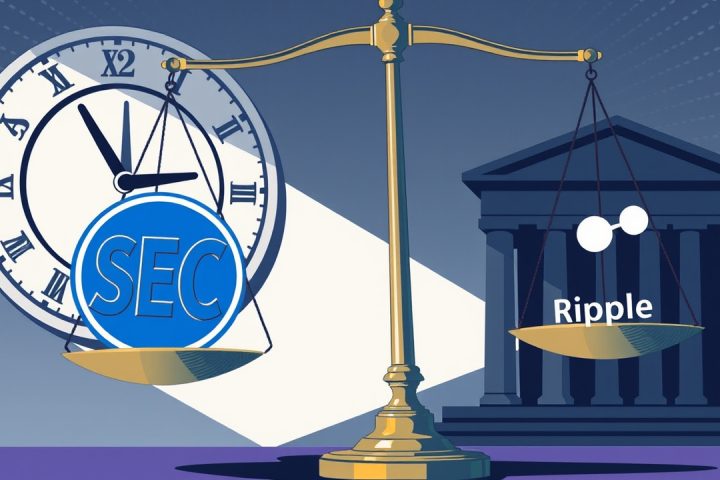A Fresh Analysis of South Korea’s Web3 Market
A fresh analysis from Tiger Research delves into the transformation of South Korea’s Web3 market during the first quarter of 2025. This landscape has evolved from a mere outlet for liquidity into a more structured industry ecosystem, highlighting pivotal regulatory changes and initiatives by global projects.
Current Landscape of South Korea’s Web3 Market
The first quarter of 2025 has raised questions about whether South Korea’s Web3 sector remains predominantly a liquidity export. While retail investors remain active and liquidity flows are significant, the growth of institutional frameworks has lagged behind. Regulatory measures have placed a stronger emphasis on safeguarding investors rather than fostering overall industry development, which stifles broader growth across the ecosystem. The primary challenges hindering progress include stringent prohibitions on the connection of corporate accounts to cryptocurrency exchanges and extensive barriers to obtaining a Virtual Asset Service Provider (VASP) license.
As it stands, companies face legal hurdles when attempting to convert cryptocurrencies earned through business operations into fiat currency through local banks—prompting some to seek temporary solutions through overseas channels, which brings regulatory risks and lacks sustainability. This situation compels many projects to see South Korea mainly as a means to acquire customers rather than a thriving market.
Despite these constraints, recent trends in the local market indicate the potential for a paradigm shift—moving away from a focus on speculation toward an environment aimed at revitalizing the industry. The recent easing of regulations, particularly concerning corporate account access for cryptocurrency trading, marks significant progress in this endeavor.
Regulatory Framework Developments
Restrictions against corporate entities trading in cryptocurrencies were initially enacted under the “Park Sang-gi Ban” in 2017, which prevented companies from entering the crypto market. Although these guidelines have expired, the effects linger, creating a dual system where individuals can trade freely while corporate participation is limited. On February 13, 2025, the Financial Services Commission (FSC) introduced a “Roadmap for Enterprise Participation in the Cryptocurrency Market,” which aims to gradually lift these long-standing barriers over the course of 2025.
The roadmap unfolds in phases, starting with law enforcement agency access to liquidate seized digital assets, expanding to non-profit organizations and exchanges later in the year. A major forthcoming shift will permit listed firms and professional investors to engage in cryptocurrency trading for investment purposes, although stringent financial thresholds may limit immediate accessibility for smaller Web3 projects.
Corporate Engagement and Market Dynamics
The reform is seen as a crucial entry point for compliant operations in the crypto-space, paving the way for increased formalization of business activities related to blockchain technology. Greater participation from corporate entities is anticipated to stabilize market volatility and enhance the development of South Korea’s Web3 ecosystem. Traditional financial institutions may soon venture into offering more diverse crypto financial services, potentially rectifying persistent issues such as the notorious “Kimchi Premium.”
A phased deregulation process may inadvertently distort market dynamics, as corporate entities are generally perceived to pose lower risks in terms of selling activities, which could lead to increased selling pressure in the market while contributing to longer-term stability as the industry matures.
Global Initiative Collaboration
In response to the global appeal of Web3 projects, South Korea has emerged as a vital strategic market for international initiatives. Various foreign teams are looking to engage with local talent and form meaningful collaborations, marking a shift towards creating sustainable ecosystems rather than superficial engagement. Projects like Avalanche and the TON Foundation serve as couples of this integrative approach, providing direct support for local developers aimed at establishing a robust ecosystem through active engagement and feedback.
In March alone, significant hackathons such as Ripple’s “DE-BUTHON 2025” and Superteam Korea’s “SEOULANA HACKATHON” showcased the growing builder community and innovation potential in the region, often serving as launchpads for new projects.
Transitioning to a Sustainable Ecosystem
As South Korea’s Web3 market progresses, it has reached what appears to be a crucial turning point towards a more structured industrial framework. Regulatory advances—the opening up of corporate trading avenues—serve as a foundation for deeper market participation, while ongoing collaboration with global Web3 initiatives promises sustained growth. A landmark development is the nascent real-world transaction conducted with the Korean Central Bank’s Digital Currency (CBDC) project, suggesting a growing interplay between regulatory action and technological innovation. Additionally, new discussions around a multi-bank model for exchanges could potentially bolster the market’s agility and accessibility.
Overall, these movements signify South Korea’s systematic transition away from a narrow focus on speculative investment towards a more resilient and structured industrial ecosystem. As the market landscape evolves, the foundation is being laid for significant innovations from South Korea that are expected to have a bearing on the broader global stage in the imminent future.




